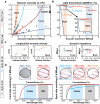An ultrasensitive and broadband transparent ultrasound transducer for ultrasound and photoacoustic imaging in-vivo
- PMID: 38365897
- PMCID: PMC10873420
- DOI: 10.1038/s41467-024-45273-4
An ultrasensitive and broadband transparent ultrasound transducer for ultrasound and photoacoustic imaging in-vivo
Abstract
Transparent ultrasound transducers (TUTs) can seamlessly integrate optical and ultrasound components, but acoustic impedance mismatch prohibits existing TUTs from being practical substitutes for conventional opaque ultrasound transducers. Here, we propose a transparent adhesive based on a silicon dioxide-epoxy composite to fabricate matching and backing layers with acoustic impedances of 7.5 and 4-6 MRayl, respectively. By employing these layers, we develop an ultrasensitive, broadband TUT with 63% bandwidth at a single resonance frequency and high optical transparency ( > 80%), comparable to conventional opaque ultrasound transducers. Our TUT maximises both acoustic power and transfer efficiency with maximal spectrum flatness while minimising ringdowns. This enables high contrast and high-definition dual-modal ultrasound and photoacoustic imaging in live animals and humans. Both modalities reach an imaging depth of > 15 mm, with depth-to-resolution ratios exceeding 500 and 370, respectively. This development sets a new standard for TUTs, advancing the possibilities of sensor fusion.
© 2024. The Author(s).
Conflict of interest statement
Chulhong Kim, Seonghee Cho and Joongho Ahn have financial interests in OPTICHO, which, however, did not support this work. The remaining authors declare no other competing interests.
Figures









Similar articles
-
A Novel Matching Layer Design for Improving the Performance of Transparent Ultrasound Transducers.IEEE Trans Ultrason Ferroelectr Freq Control. 2022 Sep;69(9):2672-2680. doi: 10.1109/TUFFC.2022.3195998. Epub 2022 Aug 26. IEEE Trans Ultrason Ferroelectr Freq Control. 2022. PMID: 35921343
-
Broadband transparent ultrasound transducer with polymethyl methacrylate as matching layer for in vivo photoacoustic microscopy.Photoacoustics. 2023 Aug 23;33:100548. doi: 10.1016/j.pacs.2023.100548. eCollection 2023 Oct. Photoacoustics. 2023. PMID: 38021293 Free PMC article.
-
Enhanced dual-mode imaging: Superior photoacoustic and ultrasound endoscopy in live pigs using a transparent ultrasound transducer.Sci Adv. 2024 Nov 22;10(47):eadq9960. doi: 10.1126/sciadv.adq9960. Epub 2024 Nov 22. Sci Adv. 2024. PMID: 39576852 Free PMC article.
-
Optical Detection of Ultrasound in Photoacoustic Imaging.IEEE Trans Biomed Eng. 2017 Jan;64(1):4-15. doi: 10.1109/TBME.2016.2605451. Epub 2016 Sep 1. IEEE Trans Biomed Eng. 2017. PMID: 27608445 Free PMC article. Review.
-
A Review of High-Frequency Ultrasonic Transducers for Photoacoustic Imaging Applications.IEEE Trans Ultrason Ferroelectr Freq Control. 2022 Jun;69(6):1848-1858. doi: 10.1109/TUFFC.2021.3138158. Epub 2022 May 26. IEEE Trans Ultrason Ferroelectr Freq Control. 2022. PMID: 34941509 Review.
Cited by
-
Enhanced model antigen retention in tissue through topical high-frequency ultrasound treatment.Biomed Eng Lett. 2024 Nov 20;15(2):273-282. doi: 10.1007/s13534-024-00445-5. eCollection 2025 Mar. Biomed Eng Lett. 2024. PMID: 40026896
-
Guided Multispectral Optoacoustic Tomography for 3D Imaging of the Murine Colon.Adv Sci (Weinh). 2025 Mar;12(10):e2413434. doi: 10.1002/advs.202413434. Epub 2025 Jan 21. Adv Sci (Weinh). 2025. PMID: 39836529 Free PMC article.
-
Signal-domain speed-of-sound correction for ring-array-based photoacoustic tomography.Photoacoustics. 2025 May 22;44:100735. doi: 10.1016/j.pacs.2025.100735. eCollection 2025 Aug. Photoacoustics. 2025. PMID: 40502803 Free PMC article.
-
Unsupervised inter-domain transformation for virtually stained high-resolution mid-infrared photoacoustic microscopy using explainable deep learning.Nat Commun. 2024 Dec 30;15(1):10892. doi: 10.1038/s41467-024-55262-2. Nat Commun. 2024. PMID: 39738110 Free PMC article.
-
Non-Invasive Photoacoustic Cerebrovascular Monitoring of Early-Stage Ischemic Strokes In Vivo.Adv Sci (Weinh). 2025 Jan;12(4):e2409361. doi: 10.1002/advs.202409361. Epub 2024 Dec 4. Adv Sci (Weinh). 2025. PMID: 39629918 Free PMC article.
References
-
- Choi, W. et al. Three-dimensional multistructural quantitative photoacoustic and US imaging of human feet in vivo. Radiology, 211029 (2022). - PubMed
MeSH terms
Grants and funding
- 2023R1A2C3004880/National Research Foundation of Korea (NRF)
- 2020R1A6A1A03047902/National Research Foundation of Korea (NRF)
- BK21 FOUR (Fostering Outstanding Universities for Research) project./National Research Foundation of Korea (NRF)
- RS-2023-00212322/National Research Foundation of Korea (NRF)
- 2022R1A3B1077354/National Research Foundation of Korea (NRF)
LinkOut - more resources
Full Text Sources

